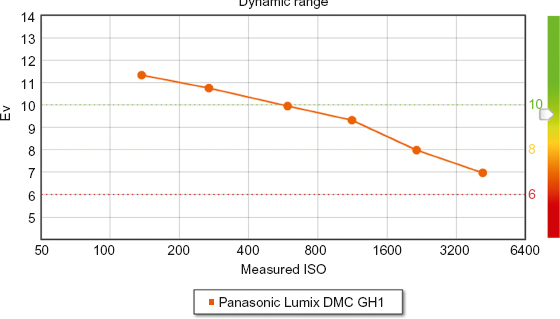Exposure and Dynamic Range
Technically, video exposure works differently than film exposure. Aside from the obvious chemical properties of film that allow for the emulsion process, film has a smooth “characteristic curve,” whereas video has a sharp curve, leading to sudden drop-offs on the curve and toe (see Figure A3.1). The characteristic curve is simply the amount of chemical density on the film activated based on the intensity of light. This density can be plotted on a graph as a relatively straight line with a curve on the top (shoulder) and bottom (toe). The slope of this curve is called the gamma, and it essentially determines the contrast of the scene. Changing the gamma curve changes the contrast value of the shot. You can alter the curves some in postproduction, but you can also manipulate it incamera before shooting (see Chapter 4).
Film has about 8 to 10 zones of dynamic range or a 512:1 contrast ratio. Standard video has only a 25:1 contrast ratio. DSLR cameras, with their larger sensors, have a much greater latitude than standard HD video cameras. According to Shane Hurlbut, ASC, the Canon 5D Mark II contains the smoother film-like curve in the toe (see Chapter 3).
FIGURE A3.1
The characteristic curve of film presents a rounded toe and shoulder, indicating a smooth exposure latitude. Video typically lacks this quality, resulting in more sudden drop-offs in the shadows and clipped highlights.
(Image from <http://www.answers.com/topic/characteristic-curve-2>, accessed March 1, 2010.)
The ISO setting determines the dynamic range of the image (see Figure A3.2). The higher the ISO setting, the lower the contrast ratio of the dynamic range.
Notice that as you increase the ISO setting, the dynamic range rapidly falls off—with 11 when setting the ISO at around 100 and just about 7 at 6400 (see Figure A3.3).
FIGURE A3.2
Dynamic range of the Canon 5D Mark II compared to the dynamic range of the Panasonic GH1 (below). (<http://www.dxomark.com/index.php/eng/image-Quality-Database/Canon/EOS-5D-Mark-II>).
FIGURE A3.3
“Dynamic range or light sensitivity range of a sensor indicates the ratio of light exposure between the highest brightness a camera can capture (saturation) and the lowest brightness it can effectively capture (typically when noise becomes more important than signal, i.e., SNR<0 dB). This range indicates the maximum contrast that can be effectively captured by the sensor. The larger the dynamic range, the better, as the sensor is able to capture higher-contrast scenes. Note that dynamic range is expressed on a logarithmic scale in EV (same as f-stop), thus an increase of 1 EV corresponds to a doubling of dynamic range.”
(<http://www.dxomark.com/index.php/eng/image-Quality-Database/Canon/EOS-5D-Mark-I.>)



